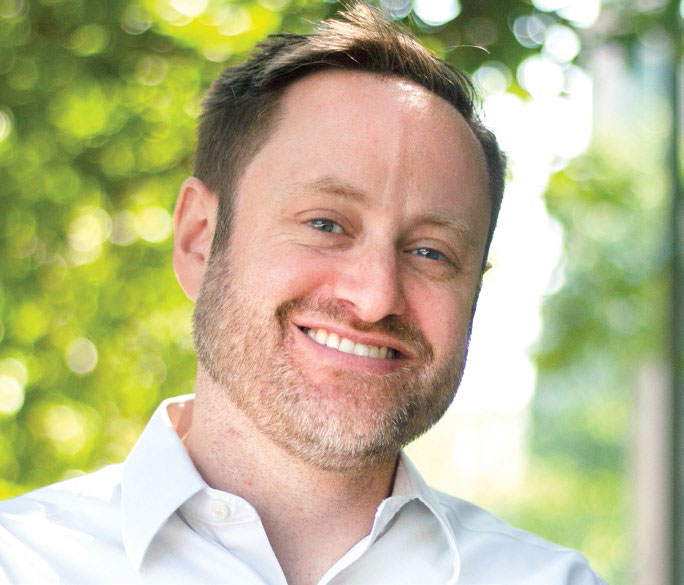How Can Schools Better Use Data to Personalize Learning?
While most US high-school students aspire to earn a college degree, less than one in three succeed.

While most US high-school students aspire to earn a college degree, less than one in three succeed. One of the primary goals of the University of Chicago’s To&Through Project is to empower K–12 educators with the research, data, and resources they need to move more students to and through high school and college.
“Our work is research based and practice driven,” says Alex Seeskin, director of the To&Through Project and one of the authors of “Using Data to Improve Schools from the Ground Up.”
Knowing that data can be critical for educators as they help students learn and achieve their potential is one thing, but applying the often overwhelming amount of data in practice is another. “We’re data rich and information poor,” says Seeskin. He identifies some key areas of focus for districts as they seek to harness the power of data: identifying barriers to student success, building systems to curate data, professional learning—and patience.
SMOOTHING TRANSITIONS
“One of the biggest problems facing schools is the transitions students have to navigate all the time—between grade levels, schools, and even classes,” says Seeskin. “Students are vulnerable at each one of these, as they move from one set of relationships and systems to another. It’s hard to personalize experiences for students when we don’t know what challenges or successes they faced in the last grade, school, or class. When a student moves from a math to an English class, for example, the English teacher often has no idea what’s happening in that math class and how that student is interacting with material in math.”
It’s critically important, therefore, for teachers to look at data together. Only when they have a holistic picture of each individual student can they personalize learning and offer the support students need. This is especially true of SEL, says Seeskin. “We encourage schools to build these structures and to make it a priority for teachers to talk together about common students and shared groups of students.”
Research also shows that a student’s GPA and attendance are much better indicators of future success than test scores, which tend to predict test scores, Seeskin says. “So we need to understand and pay attention to those indicators as we intervene and personalize work with students.”
Tools and ideas to transform education. Sign up below.
CURATING DATA
“Schools and practitioners often feel they’re drowning in data, and time is a valuable resource,” says Seeskin. “The key is to help them curate the data so they know what to pay attention to when—at different times of the school year, for example. We need to build tools that funnel the right data to schools and practitioners—and that also funnel the data they don’t need away from them. Data needs to be understandable and accessible so teachers can make decisions quickly.”
Practitioners need support as they learn to use data and make these data-based decisions. Professional learning should include a technical component as well, Seeskin says, to ensure that the technical problems most schools face don’t sabotage adaptive learning. Trust and collaboration are also key building blocks to success. “There needs to be trust between the system and practitioners and discussions around who’s best equipped to make decisions at different levels within a district,” says Seeskin. “And it’s important to take time to consult with other schools facing similar challenges.”
PLAYING THE LONG GAME
“This is incredibly challenging and complicated work, and there are very few easy answers,” says Seeskin. “I see this a lot—a school can have all of the data and resources they need, but they don’t see immediate change and go looking for a silver bullet. I see systems and schools ping-ponging between new initiatives every year. That type of change is frustrating, exhausting, and often demoralizing.”
Instead, he says, schools need to be comfortable with somewhat slow, incremental progress. “We have to play the long game and build systems and structures and a culture that enable us to invest in process over results. We have to have patience. We can’t change a school in a year. When you take the longer view, you begin to think about gaining trust and buy-in from those who matter most and crafting solutions alongside them.”
This patient view of the bigger picture applies to every step of the process, beginning with the launch. “I’m a huge believer in starting with one thoughtfully chosen school, grade level, or even teacher rather than launching a new initiative across 100 schools tomorrow. There’s real power with starting with an N of 1 and going slowly, recognizing that there will be failure. It’s probably not going to work the first time, but that just means you haven’t figured out how this approach works in your context. When the system is willing to iterate with the first school, by the time they get to the second or tenth school, the intervention is more mature, and they’re able to offer better guidance and respond more quickly. When you give interventions or initiatives a chance to adapt to the surrounding context, they work much more often.”
The research, stories, and resources at https://toandthrough.uchicago.edu illustrate how To&Through’s research-based and practice-driven work is impacting schools and students.
